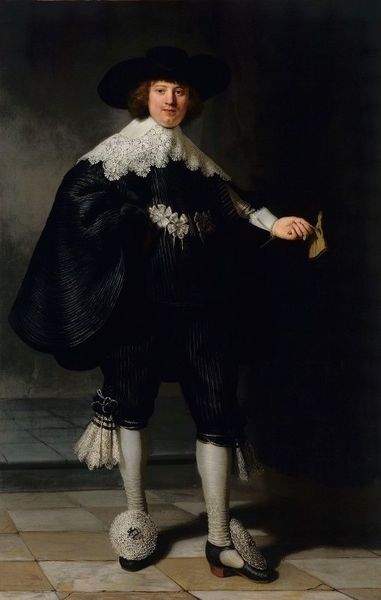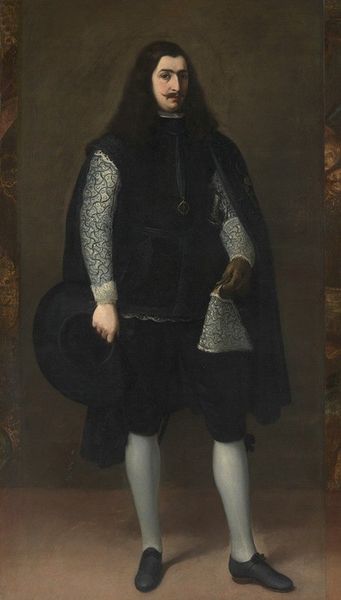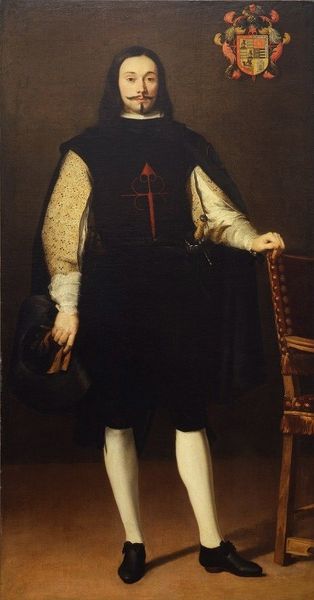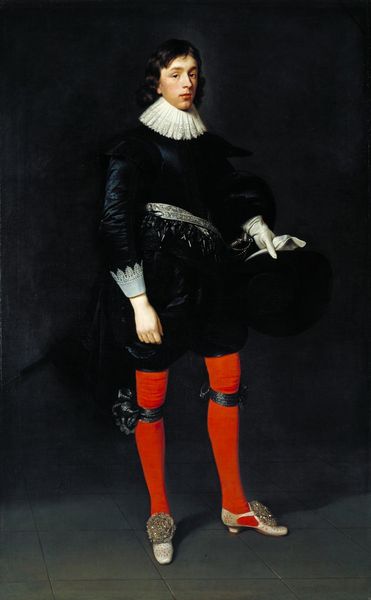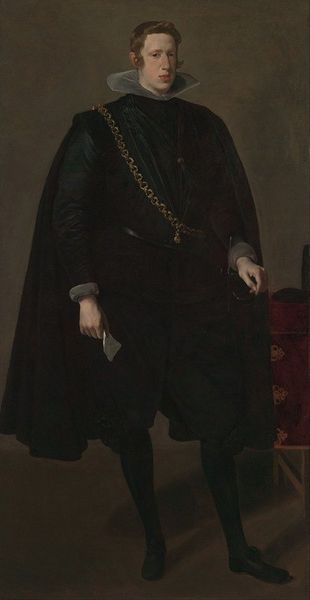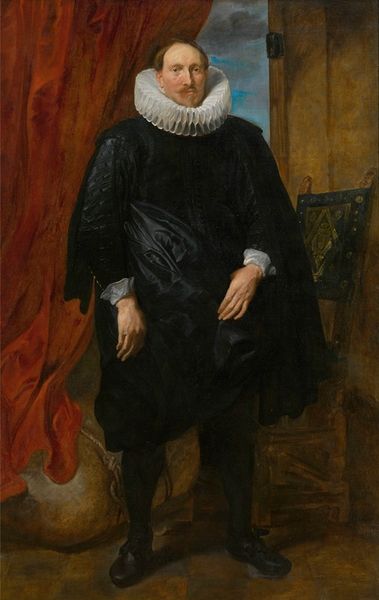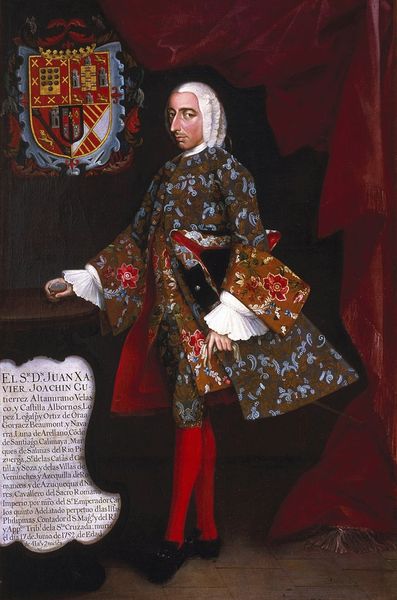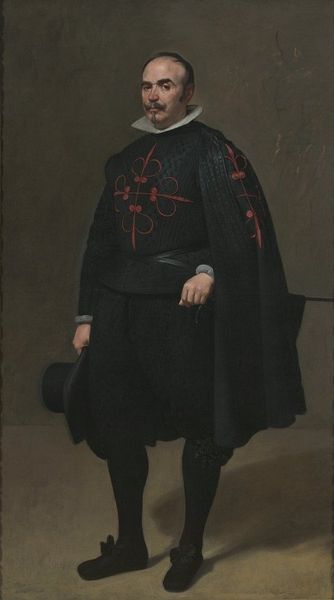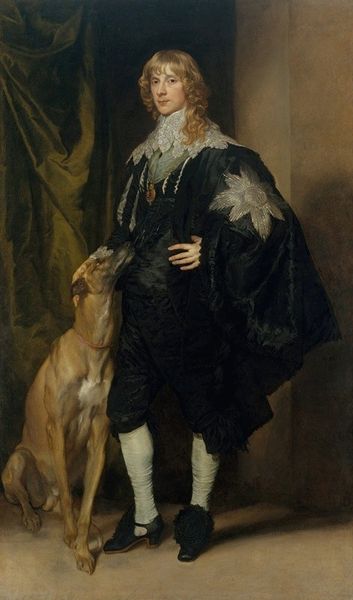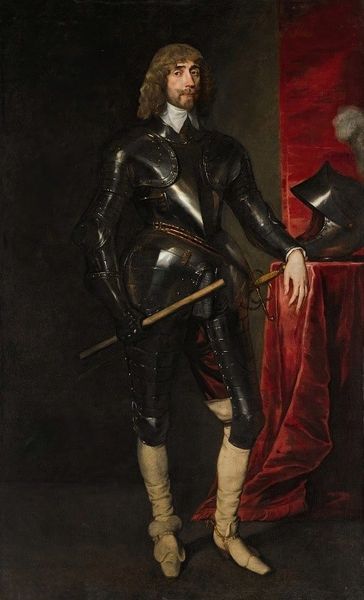
Portrait of A Gentleman, Presumably A Member of The Ostigliani Family 1677
0:00
0:00
painting, oil-paint
#
portrait
#
figurative
#
character portrait
#
baroque
#
painting
#
oil-paint
#
portrait subject
#
figuration
#
portrait reference
#
portrait head and shoulder
#
portrait drawing
#
facial portrait
#
portrait art
#
portrait character photography
#
fine art portrait
#
celebrity portrait
Copyright: Public Domain: Artvee
Editor: So, this is "Portrait of a Gentleman, Presumably A Member of The Ostigliani Family" by Bartolomé Esteban Murillo, painted in 1677. It’s an oil painting. I find the figure’s stance really confident and the contrasting textures—lace, dark fabric, marble—are captivating. How do you interpret the social context of this portrait? Curator: Well, the most striking element is the clear display of wealth and power through dress and setting. Consider the socio-political climate of 17th-century Spain. Murillo, as a prominent artist, was often commissioned by wealthy merchants and nobles. Portraits like these weren’t just likenesses, they were carefully constructed statements about social standing. Editor: So, this is almost like a visual declaration? He seems so…contained, but powerful. Curator: Precisely! The controlled pose, the costly lace, even the hint of a grand interior with that column and drape... It’s all meant to project authority. The dark clothing, typical of the Spanish court, also signals sobriety and gravitas, values esteemed at the time. Does the Ostigliani family name suggest anything to you? Did they commission it, do you think? Editor: That's a good point, I hadn't considered that the name might suggest a certain intention! I see now, it's not just a picture; it's carefully positioned to fit in with their family's self-representation. Curator: Exactly! By understanding who the likely patrons were and what they wanted to project, we can better understand the function this portrait served in its original context. How it participates in constructing social status, shaping perceptions. Editor: That's a completely different way of seeing it than I was initially. It moves beyond just the surface. Thanks! Curator: Indeed! Examining the history of how such portraits were commissioned and displayed is essential. This artwork really underscores the power of visual representation in maintaining the social hierarchy of the period.
Comments
No comments
Be the first to comment and join the conversation on the ultimate creative platform.
